Graffiti in Philadelphia : Temporary yet Timeless (and Legendary)
Philadelphia is known today as a city of murals.
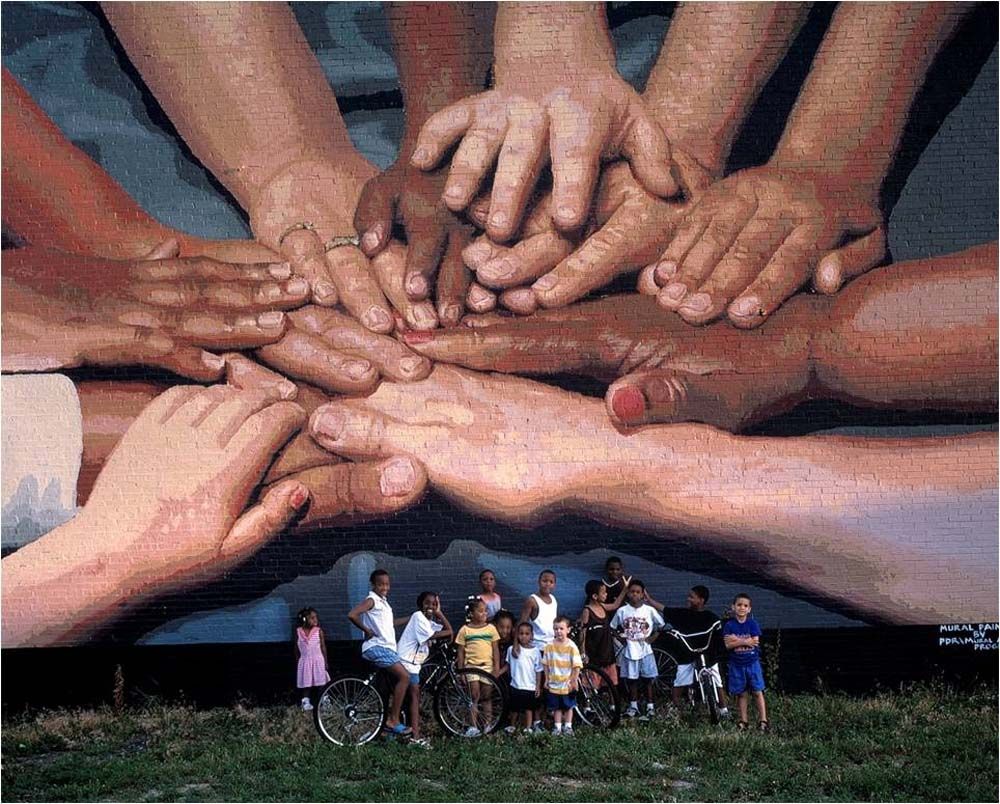
Peace Wall, 29th & Wharton, 1997. Credit: Jack Ramsdale for Mural Arts Program.
But scroll back to the 1960s. Philly was then mural free and still the walls spoke loud and clear, thanks to "Doctor Cool," No. 1," "Cool Earl," "Chewy," "King Lewis," "Kool Klepto Kid," "Sexy Snake" and, of course, "Cornbread." Philadelphia was America's tag capital.
Years later, after "Cornbread" (Darryl McCray) retired, he admitted to Daily News reporter Gloria Campisi that he still couldn’t pass “a clean wall” without feeling “the urge” to write.
“I have to turn my back,” admitted McCray. “It’s like dope, I guess. It gets in your blood.”
It got in Philadelphia’s blood, too.
Long after McCray stopped writing, the legend of Cornbread continued to grow in the public imagination. Graffiti fans everywhere knew about the time the young McCray set out to impress a classmate. “Cornbread Loves Cynthia” was soon everywhere. McCray used his spray can and marker to swat away rumors of his demise. “That’s when I broke into Philadelphia Zoo and spray-painted ‘Cornbread Lives’ on an elephant,” he boasted. McCray wasvery much alive, writing “on cop cars, paddy wagons, thirty-story skyscrapers, even on the side of the Jackson Five’s private jet.”
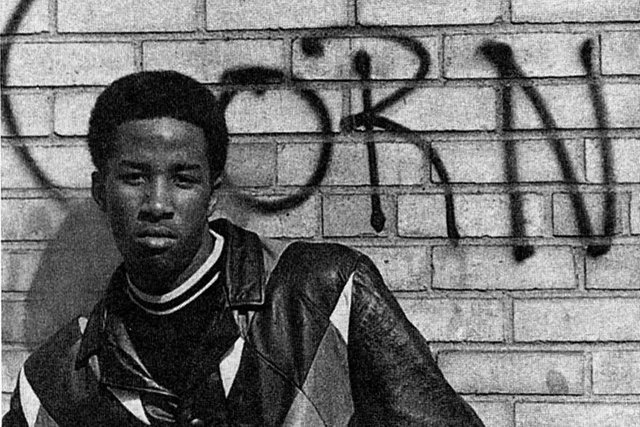
Cornbread (Darryl McCray). Credit: Widewalls
In January 1984, when McCray joined Mayor W. Wilson Goode and four other former wallwriters at a press conference to condemn graffiti, Daily News writer Michael Sokolove expressed dismay: “Say it ain’t so, Darryl McCray. That can’t be you in that tweedy ensemble, the peach-colored sweater matching the beige jacket and brown slacks. A Philadelphia folk hero looking like he’s stepped off the pages of Gentlemen’s Quarterly!”
The Philadelphia’s graffitiati had moved on. Philadelphia graffiti had not.
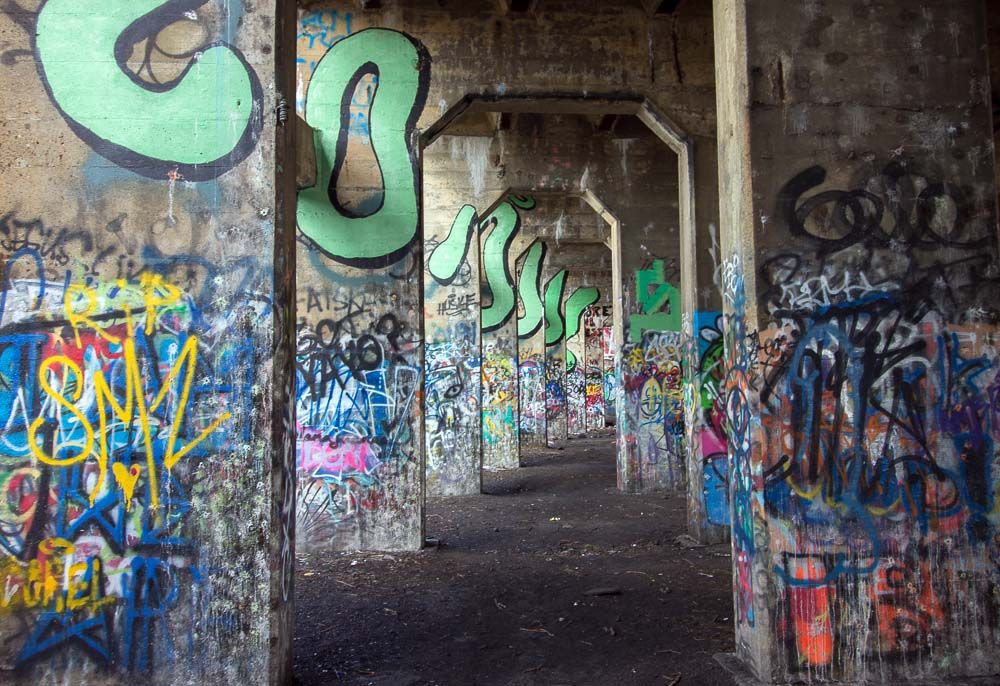
Graffiti Pier. Credit: Michael Bixler
Graffiti Pier is case in point. This former anthracite coal-loading pier in “Reading Railroad’s sprawling Port Richmond Yards, was decommissioned and abandoned… in 1991,” according to Shila Scarlett Griffith. It lives on, thanks to a combination of “nature and graffiti writers” as Philadelphia’s “best outdoor art space.” It’s a “popular destination among locals and explorers of all stripes who treat the industrial ruins like an evolving folk art museum and a riverside park.” Maybe Graffiti Pier, a perfect reincarnation/reiteration, will someday achieve official status as a park?
But if Graffiti Pier is lost, it will be in very rich company. Most of what went up eventually came down. (None of it was meant to last forever.) Here's the thing—there’s no archive of this most historic, persistent and ephemeral form of expression, of identity-making on the city's walls.
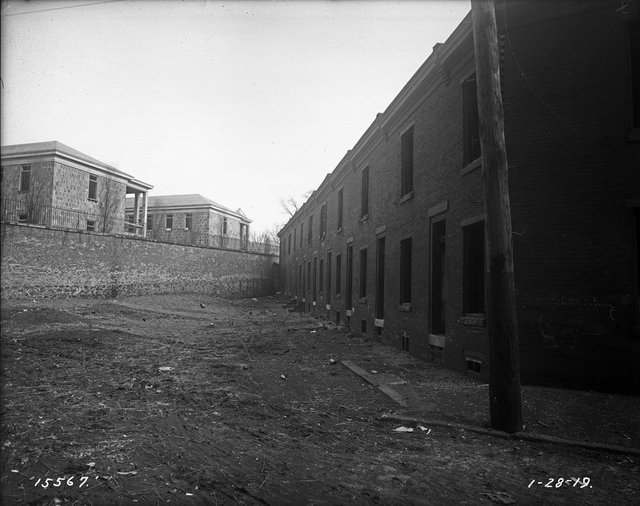
The Devil's Pocket, 1919. Credit: PhillyHistory.org
Another case-in-point: In the Spring of 1835, newly-arrived Irish laborers, some of whom lived in the Schuylkill neighborhood, in a section known as “The Devil’s Pocket,” led the nation’s first general strike for shorter working hours. The “Working Men of Schuylkill,” the “Coal Heavers,” as they called themselves, successfully campaigned with a sharp slogan protesting the dawn-to-dusk workday. “Six to Six!” they chanted as they marched with fifes and drums. “Six to Six” appeared in headlines, on broadsides, in store windows, and, as newspapers reported, “scrawled in chalk on fences.”
We’ll have to take their word for it. No images survive.
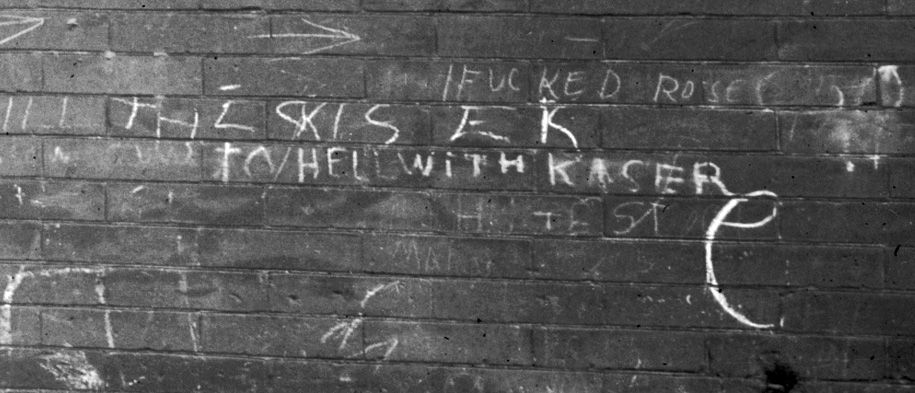
The Devil's Pocket, 1919, detail. Credit: PhillyHistory.org
How would the occupants of the Devil’s Pocket, a place known (to outsiders) as a “nest of unnameable lawlessness” and “the worst neighborhood in the city,” express themselves on their walls? We have an opportunity to take a zoomed-in look from 1919. Something about a woman named Rose? Something else that perhaps read: “To Hell with Kaiser”—referring to the recently defeated German Emperor in World War I?
As prime ministers and presidents debated their desire to hang the Kaiser, so did the rank and file in the Devil’s Pocket.

Thanks - upvoted. You may be interested in a project to help minnows further: Minnows Accelerator Project. Join over 100 like-minded quality content creators.
Great public art and public history here. Hopefully these things are documented before they're gone. This is a major issue, but also the beauty of graffiti and tagging - anyone can paint over it or tear it down.
Thanks! Philly's Mural Arts Program has initiated a study headed up by a longtime conservation professional to recommend policies. It's an important , overdue issue with so much on the street. Also, the Association for Public Art has regularly scheduled treatments. But documenting grass roots graffiti? Unfortunately that's left to chance.